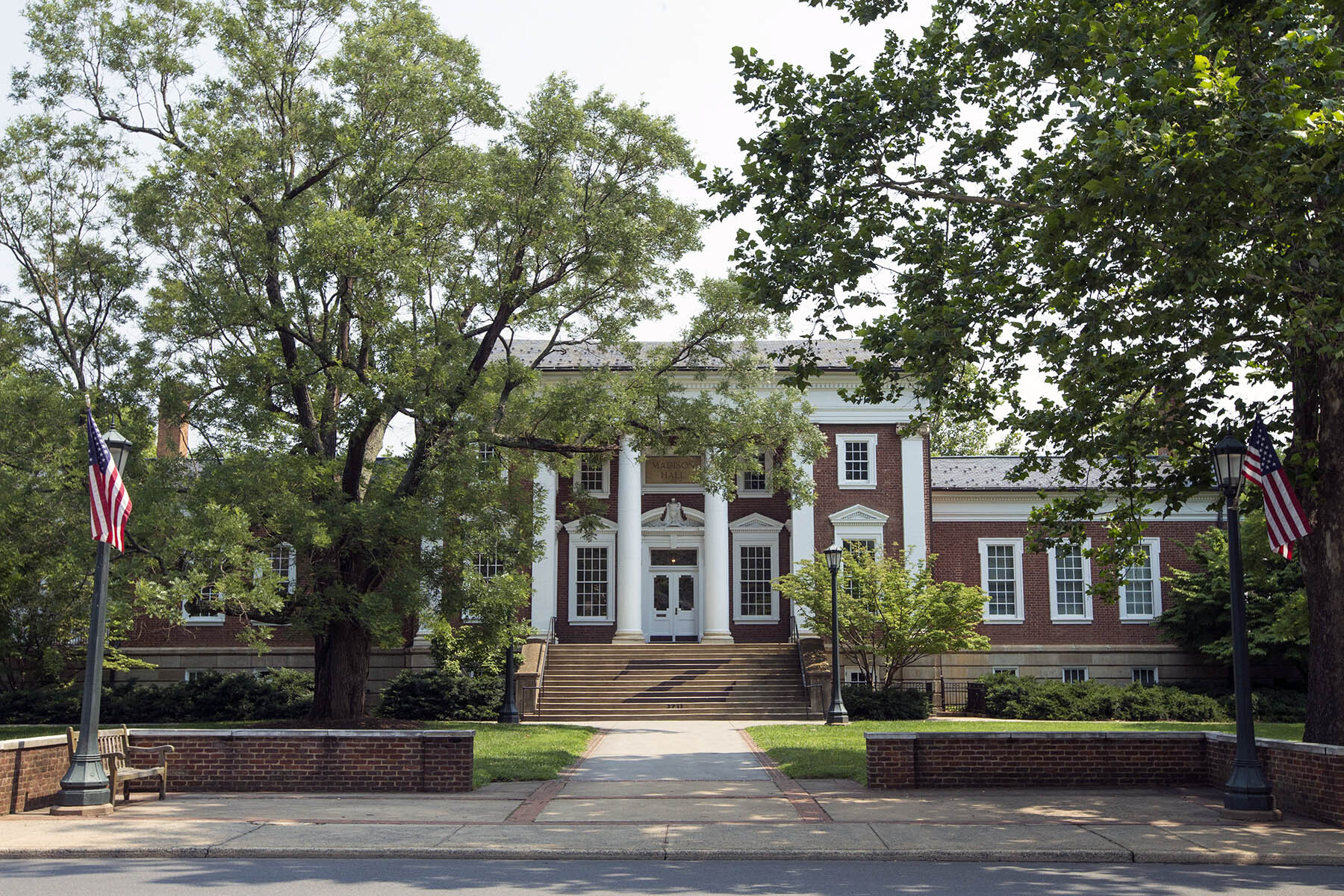The following essay was first published in the Chronicle of Higher Education on May 25, 2023.
DEI: The Case for Common Ground

In an essay in the Chronicle of Higher Education, President Ryan writes about diversity, equity and inclusion and suggests there is room for common ground. (Photo by Dan Addison, University Communications)
Efforts to promote diversity, equity, and inclusion on college campuses are increasingly under fire. DEI programs and offices, which have been around for decades, are now the targets of a steady stream of criticism, and legislation has been introduced in at least 20 states to limit DEI programs at public universities. Despite this swirl, I believe there is more room for common ground than might appear from news accounts.
Critics of DEI fall roughly into two camps. One embraces the basic principles that college campuses are better places if they are diverse, treat people fairly, and are welcoming to all. But they are concerned about overreach, especially where DEI efforts threaten academic freedom or seem designed to enforce ideological conformity.
Another camp would like to see DEI disappear altogether. They assert that the programs are being used to promote a stringently liberal, if not radical, agenda – one that stands in opposition to merit and excellence and unfairly privileges certain groups over others.
The bills introduced in state legislatures illustrate this divide. Some bills, connected to those in the first camp, target mandatory diversity trainings for faculty and staff. Others, connected to the second group, seek to dispense with DEI offices and staff members at institutions, usually by prohibiting funding.
I disagree with those who would like to prohibit DEI efforts altogether. Colleges should continue to promote the core elements of DEI, as these efforts are crucial to ensuring opportunity and access, attracting and retaining the most talented people, creating a vibrant campus culture, and promoting a richer and more robust exchange of ideas. But in order to preserve and protect DEI, those of us working in higher education have to take the criticisms of DEI seriously – and do more to explain our efforts.
Three things are in order. We ought to define the terms that comprise DEI; assess and resolve instances where DEI efforts are in potential conflict with other core values; and continually examine what is working and what is not and adjust accordingly.
To begin, it would help to have a working definition of the terms diversity, equity, and inclusion, if only to avoid people talking past one another. I would define diversity broadly to include not just race, ethnicity, and gender, but a wide range of other factors and characteristics, including geography, socioeconomic status, first-generation status, disability status, religion, age, sexual orientation, viewpoint, ideology, and special talents. College campuses are, and should continue to be, places where students are likely to encounter people who have different backgrounds, experiences, and viewpoints, and they should be places that search for and welcome talented students, faculty, and staff from all walks of life and every background.
The term “equity” has been a lightning rod in debates about DEI, with critics claiming that it means “equal outcomes” and therefore should be denounced as somewhere between anti-merit and anti-American. I have no idea where this notion came from, but it ought to be rejected out of hand. I know of no college that guarantees equal outcomes.
A more accurate and appropriate definition of equity is an effort to ensure equal opportunity, not equal results. The term recognizes that not everyone starts in the same place or is in the same circumstances, so treating people exactly alike is not always fair – and not always consistent with providing equal opportunities. How far a college goes to remove barriers to success will always be subject to debate, but the basic idea should not be controversial.
For example, offering a sign-language interpreter for someone who is deaf or a ramp for someone in a wheelchair are hardly radical gestures. The same is true of the most conspicuous example of equity in higher education, which is hiding in plain sight: financial aid for students from lower-income families. Not everyone pays the same price to attend college, which means not everyone is being treated equally. Financial aid is nonetheless equitable because it ensures that qualified students are not barred from attending because they happened to be born into a family that lacks the resources to pay full tuition. Students who receive financial aid are not promised to graduate with honors or even to graduate; like every other student, they are offered a chance to succeed. Those opposed to equity should explain why need-based financial aid, which is well accepted and widely celebrated, should be jettisoned.
Inclusion begins with the recognition that it is one thing to recruit a diverse group of students to attend college, or to hire a diverse group of faculty and staff, but it is another thing to help make them feel at home. This is what inclusion is about: an effort to make everyone feel like they belong and are full and welcome members of the community. The idea is simple to understand but challenging to carry out and measure, as it cuts across a broad range of areas and activities. It can encompass the food that is served in the dining hall and whether there are options for those with dietary restrictions, whether religiously based or otherwise. It can encompass the holidays and events that are celebrated. It can include how the institution’s history is told and whose pictures are on the walls. Here, too, there can and will be debates about what measures make sense, whether some are misguided or counter-productive, and what to do if inclusion and tradition clash. But the basic idea that colleges should create an environment where people feel welcome and at home should not raise a lot of eyebrows.
I have worked in higher education for 25 years, and in my experience, those descriptions of the basic elements of DEI capture the bulk of the work done under that banner, and my sense is that there is widespread support for this work. Indeed, even critics of DEI often argue that colleges should have more politically conservative faculty and students; that these students and faculty should be treated fairly; and that they should feel freer to voice their opinions. I may be missing something, but that sounds like an argument for DEI, albeit for one particular group.
DEI, moreover, is not some fringe effort, limited to college campuses. It is a prominent feature of major institutions outside of higher education, including Apple, Amazon, the Coca-Cola Company, the Mayo Clinic, MetLife, Covington & Burling, Goldman Sachs, Bain, and the branches of the armed forces, to name a few. All of these organizations embrace DEI because they recognize that diverse teams tend to produce better results and that talent knows no demographic barriers. Any college that gives up on DEI will not be placing themselves back in the mainstream – they will be identifying themselves as an outlier among major American institutions. As a result, their students may suffer when it comes time for hiring and recruitment by organizations that remain committed to DEI.
All that said, it is important to take the sincere criticisms of DEI seriously. Many of the critiques focus on diversity statements or mandatory diversity trainings. And here the critics raise some valid points. Although these statements and trainings are well-intentioned attempts to create a more inclusive environment, they run the risk of being coercive. If faculty, staff, or students are required to assent to propositions that are debatable, as opposed to self-evident, such trainings would run the risk of crossing the line from education to enforced orthodoxy. If applicants have to describe how they are going to further DEI, it raises concerns that they will feel pressure to state particular beliefs in order to get hired. And if faculty are required to report on how their teaching or research efforts have promoted DEI, it risks infringing on academic freedom.
That is not to say that all diversity statements and mandatory trainings should be tossed out wholesale, or that applicants and current employees should never be asked about DEI. There is nothing inherently wrong in asking people how they might help advance the values of the organization. But in an academic setting, especially, we have to be sensitive to the specter of coercion. And we should remember, especially as educational institutions, that people are much more likely to be persuaded if they have a chance to draw conclusions on their own from facts, history, and data, rather than feeling like they were forced to get on board.
We should also remember that in this instance, as in many others, actions speak louder than words. To create a community that is diverse, equitable, and inclusive, those in leadership positions have to take actions that actually further those goals – through their admissions processes; their hiring and retention practices; and in the myriad decisions they make about rooming policies, the food to serve, the events to celebrate, the spaces to create for students, and who in their community they choose to honor.
Colleges, finally, should ensure as best they can that resources spent on DEI are not being wasted. Some efforts, like those focused on inclusion, can be difficult to measure. Others, such as the demographic composition of students and faculty, retention rates, and graduation rates, are easier. Still others require ongoing evidence-based assessment. For example, mandatory diversity trainings have received mixed reviews from social scientists, with some studies suggesting they may worsen the climate or culture of an institution. Those involved in DEI work need to be sincerely committed to assessing the impact of their efforts, and shifting away from what is not working and doubling down on what is.
It is not enough to say the work is important and so it should continue – though it is, and it should. We also have to be disciplined about how we approach these efforts and remain committed to pursuing what actually works to achieve a more diverse, fair, and welcoming environment.







